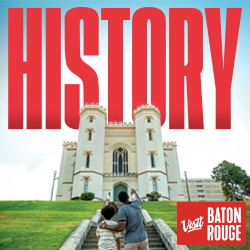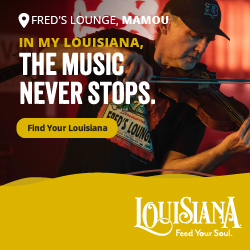At a two-sided Coca-Cola machine, white customers plunked their coins in on one side while black patrons paid more on the “colored” side — for the same soda from the same machine. This exhibit at a civil rights museum in North Carolina helps visitors personalize the injustices of the Jim Crow era and appreciate the resolve of civil rights activists who fought to overcome them.
Whether exhibits include a Ku Klux Klan robe, a Montgomery city bus or rubble from a church bombing, civil rights museums seek to not only tell the history of slavery, segregation and the civil rights movement, but also put that history in the context of contemporary race relations and the modern struggle for social justice. These prominent museums are all important stops on the U.S. Civil Rights Trail.
Rosa Parks Museum at Troy University
Montgomery, Alabama
Many people don’t realize that Rosa Parks was seated — legally — in the “colored section” when she was asked to give up her seat on the Montgomery city bus for a white man.
Guests to the Rosa Parks Museum at Troy University in Montgomery will see a 1955 bus from the city’s fleet. Though it’s not the one on which Parks was riding December 1, 1955, when she was arrested, it’s where visitors today can watch a re-enactment film play through the bus windows to learn about what happened that day.
The immersive exhibit is designed to provide an experience: “You even hear sirens when the police come,” said museum director Felicia Bell.
The bus is one of the primary exhibits that helps the museum tell the story of what happened that day and how Parks’ arrest helped spark the Montgomery Bus Boycott.
“We want to get her off the bus and allow visitors to think critically about her and her life of activism,” Bell said. “She was involved in many causes.”
Visitors to the museum will also see a 1955 “rolling church” station wagon, a vehicle churches used to transport black passengers during the boycott.
In the children’s wing, guests experience the Cleveland Avenue Time Machine, a larger-than-life bus simulator that transports visitors back to the “separate but equal” Supreme Court decision and the Jim Crow era.
Martin Luther King Jr. Center for Nonviolent Social Change
Atlanta
Martin Luther King Jr.’s wife, Coretta Scott King, established the Martin Luther King Jr. Center for Nonviolent Social Change in June 1968, three months after her husband was assassinated.
Now, 50 years after Martin Luther King Jr.’s murder and the center’s founding, visitors can learn about the six principles of nonviolence, read King’s words and hear them from above. Audio recently added throughout the campus lets visitors hear King’s voice and learn about his life, not only as a renowned civil rights leader, but also as a human, a man who loved to swim and whose last car, a 1967 Chevy Impala, still sits in the garage of his home today.
The King Center has been updating both aesthetics and technology and just completed a renovation of the iconic reflecting pool where the Kings are entombed side by side in a white crypt.
“We have seen a surge of people coming from all over the Earth to just sit in front of that pool to pray and contemplate,” said Carmen Luisa Coya-van Duijn, director of communications.
Video monitors were added in Freedom Hall so guests can see photos and watch clips of King’s speeches and interviews. Center leaders also plan to renovate and reopen the chapel and add digital screens along the outdoor Freedom Walkway.
Groups can arrange special nonviolence training programs like those used to train protestors during the movement.
“We give them the tools and the strategy and the mind-set and the philosophy behind it,” Coya-van Duijn said.










